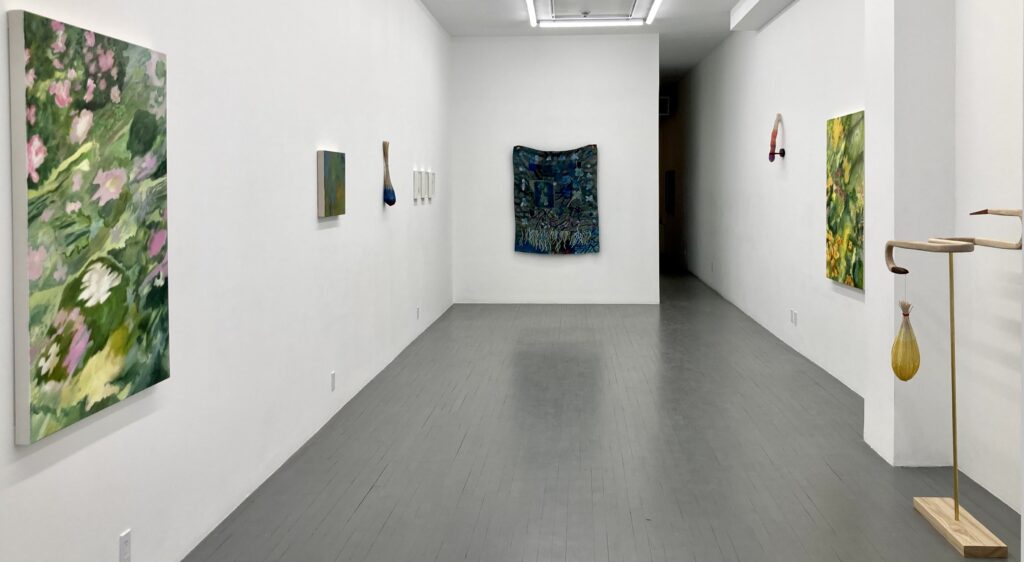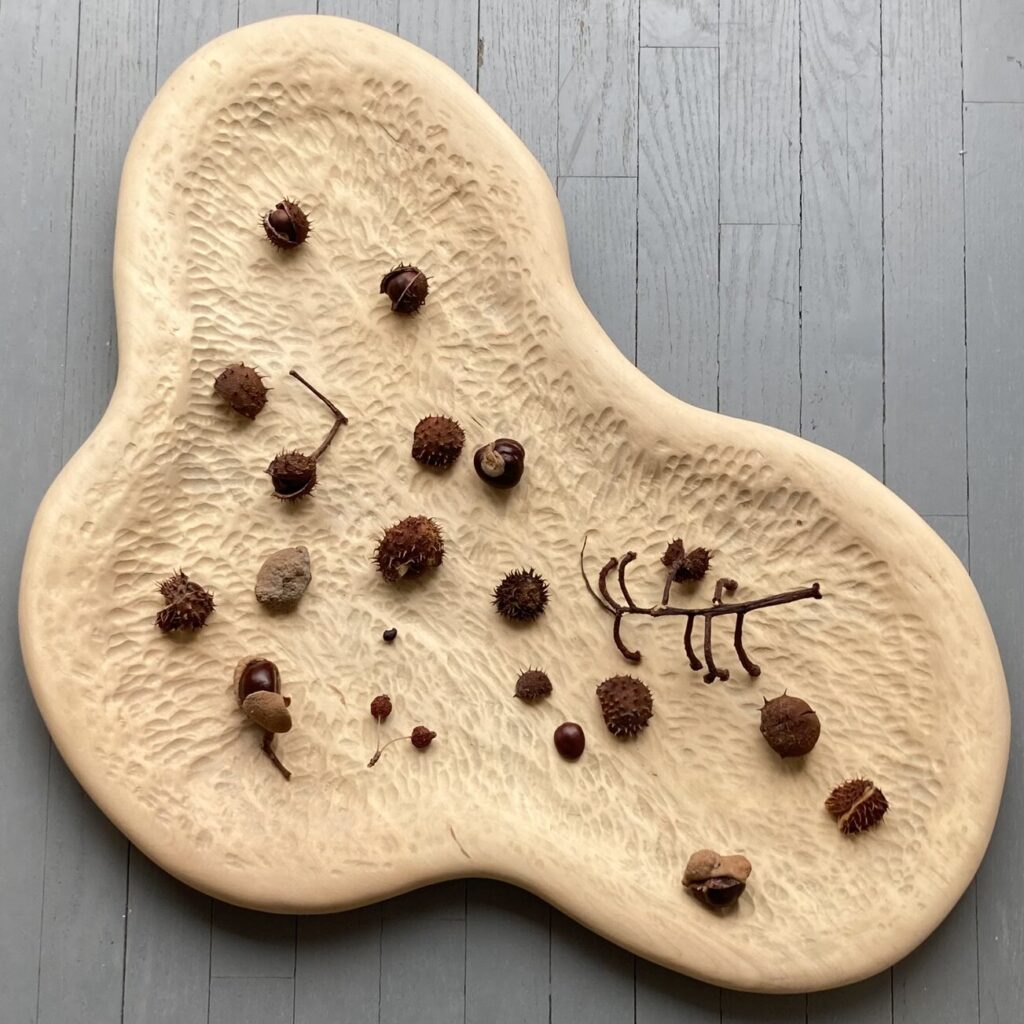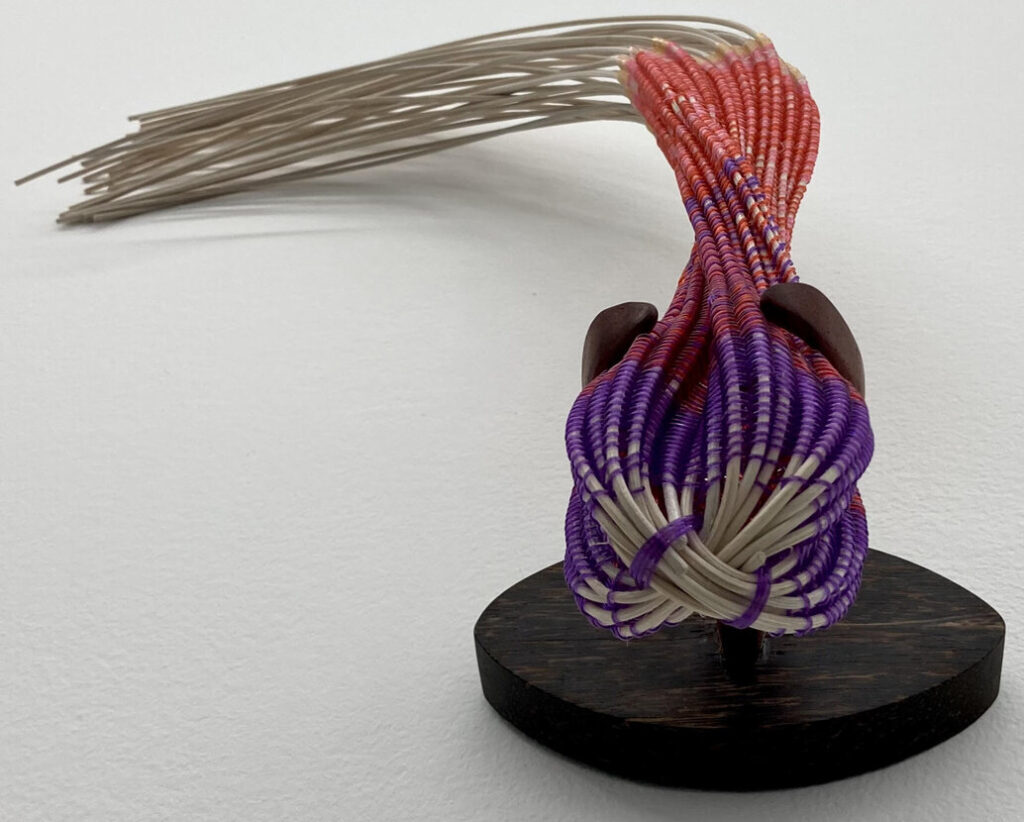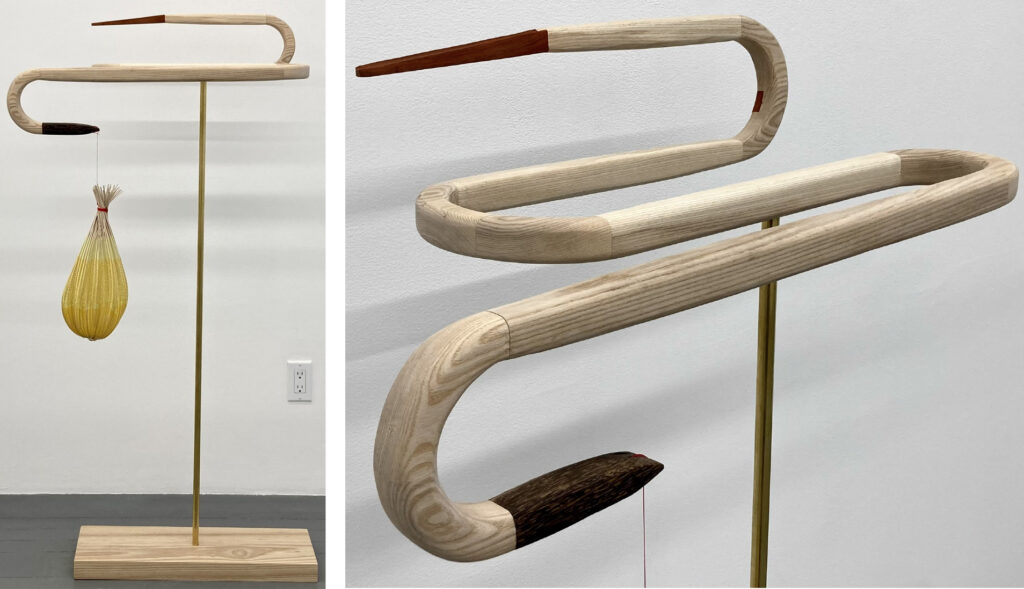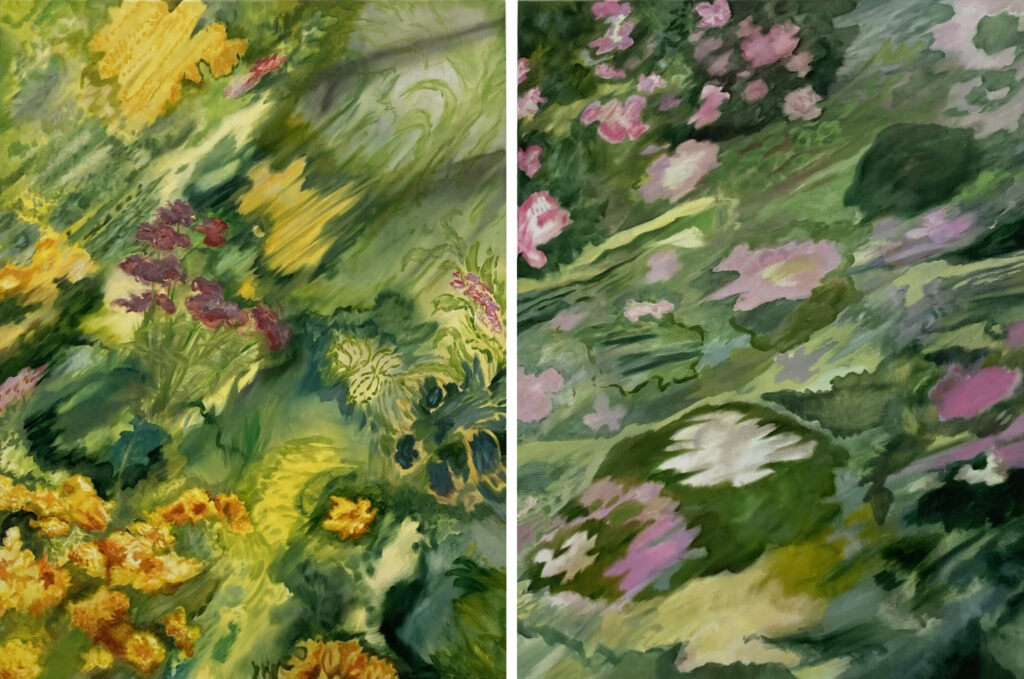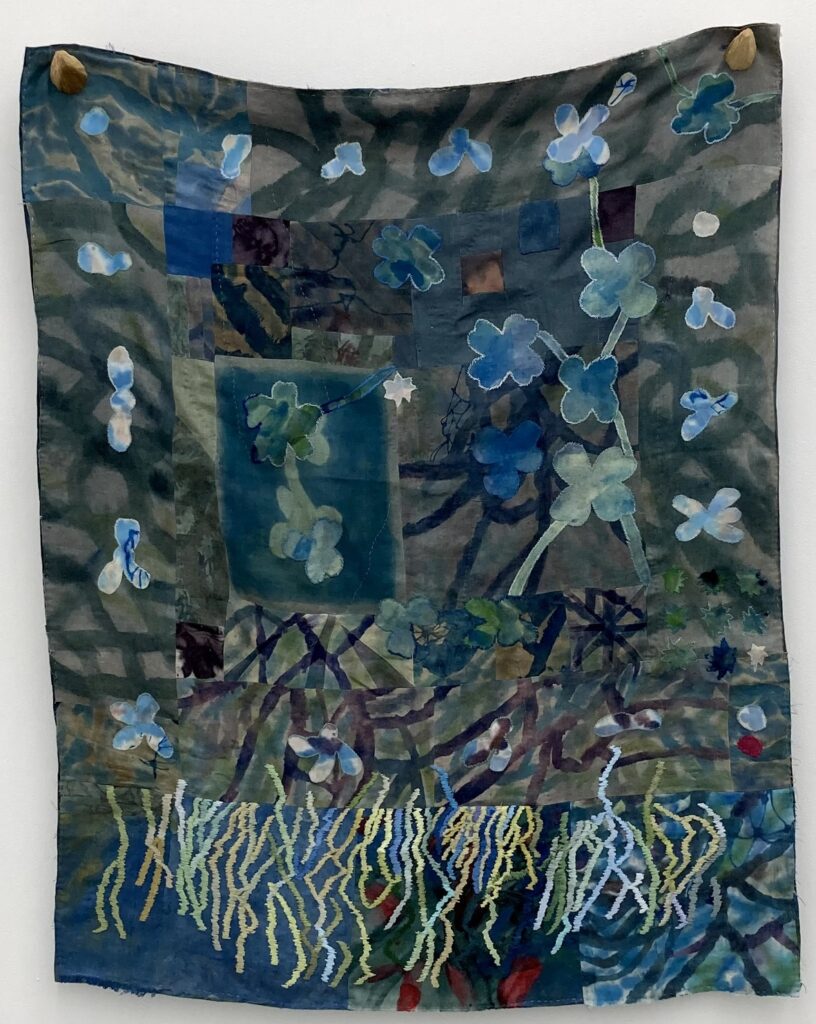Also a Good Place to Sulk at Zalucky Contemporary contemplates the role of the garden (and nature) as a site of respite. The exhibition was curated by Anaïs Castro, featuring artists Béatrice Côté, Bronson Smillie, Kristi Chen, and Laurel Rennie.
Installation view of Also a Good Place to Sulk at Zalucky Contemporary
Immediately upon entry there appears to be a shallow bowl filled with remnants that remind me of lychee, rambutan, and longan. I imagined the mild taste of the longan’s flesh and the sensation of tearing it from the pit. Upon closer inspection I realize they are chestnuts. Laurel Rennie’s “Muster” is a tableau, the stage carved out of basswood, with soft indents like the texture of the shells. The depth of the outward flecks holds viewers focus at the center of the organic shape. Movement and organic shapes are present throughout the exhibition, straying away from harsh forms and opting for natural materials.
Laurel Rennie, Muster, 2023, carved basswood, milk paint and chestnut oil, linseed oil, beeswax, 31 x 19 x 1.5 inches
Produce is a common subject matter throughout the works in Also a Good Place to Sulk, inherently linked to gardens through growth and harvest. Kristi Chen’s contributions are a reimagining of various fruits, recreated with rattan reeds, palmwood, and paduk wood, adorned with crystal beading. The “Invasive Blueberry” is realized as a teardrop, a gradient of blues enveloping the underbelly of the fruit. Meanwhile, “Dragonfruit” is a pleasure to explore from different angles. Facing it directly, “Dragonfruit” appears as a creature swooping downwards. Viewed directly from below one can see a face, with a snout formed by the crossing of rattan reeds. The wooden clasp holding the piece in place suggests ears framing the head of the beast.
(Viewed from below) Kristie Chen, Dragonfruit, 2024, crystal beading, thread, round rattan reed, palmwood, paduk wood, 23 x 6 x 3 inches
Animal energy is also present in “The Snake and the Pomelo”, with the serpentine quality inherent in the curvature of the wood rising above the brass rod. The pomelo hangs from the edge of the snake’s tail, with connotations of citrus from the canary, cadmium, and citrine beading coiling around the bottom.
Kristi Chen, The Snake and the Pomelo, 2024, Ash wood, Paduk wood, Palmwood, crystal beading thread, round rattan, metal rod, 65 x 40 x 14 inches (left) and detail (right)
The winding figure accompanied by circular motifs is also evident in Bronson Smillie’s felt drawings. The series features felt stickers, circles and soft lines in a muted palette, composed on ledger sheets. The colours prompt imagery of ponds, reeds, root systems, and flowering branches. Utilizing the bureaucratic sheets in this way is a playful subversion, as if the artist wants us to consider a balance with nature even in administrative settings.
Bronson Smillie, Felt Drawing #1-3, 2022, drawing and felt on paper, each 10.75 x 7.75 inches framed
On the topic of nature in inhospitable settings, Béatrice Côté’s contributions reflect upon greenery in urban spaces. Côté’s series of paintings lack a sharpness in the subjects though the presence of flora is clear. The blur is constant, as if urging our eyes and ourselves to focus and concentrate. This is a parallel to living in cities and trying to grasp exactly what we’re missing—our bodies yearning for something artifice cannot provide. “Fleurs Soleil” and “Fleurs Babar” feature the sweeping visual of flowers in motion, as if the viewer is spinning and can see a meadow in the periphery.
Béatrice Côté, Fleurs Soleil, 2023, oil on canvas, 48 x 36 inches (left) and Fleurs Babar, 2023, oil on canvas, 46 x 36 in (right)
The idea of being enveloped and immersed in a floral visual is observable in Laurel Rennie’s “Night Roots”. The textile piece is an assemblage of naturally dyed fibers and fabric patches formed into a quilt. “Night Roots” appears as an alternative tree. On the surface of the work, towards the bottom, are a variety of roots full of vitality. At the top is a frame of flowers, dyed and sewn onto the fabric of the piece. “Night Roots” captures the confusing immersion into the subconscious world, one where the primordial desire to be attuned to nature is well known. Rennie’s work is an example of dreams being realized in the material world.
Laurel Rennie, Night Roots, 2023, Cotton, linen, wool, and hemp fabric, chestnut dye, blackberry stains, logwood, cotton embroidery floss, carved poplar, 53 x 43 in
Considering the technical acts of carving wood, dyeing fabrics, assembling reeds, the artists in Also a Good Place to Sulk engage with nature in a meditative way. Castro’s curation is a gentle reminder that we cannot reap the same day we sew; life takes time. We continue to search for the natural world despite existing in urban spaces shrouded with pollution and industrial infrastructure. Verdant pockets of life find their way into our consciousness, whether they are fleeting visions in our periphery like Côté’s works, or a wistful moment browsing produce in our favourite market.
Text and photo: Rashana Youtzy
*Exhibition information: Also a Good Place to Sulk / Group Show, February 22 – March 23, 2024, Zalucky Contemporary, 3044 Dundas Street W. Toronto. Gallery hours: Thursday to Saturday, 12 – 5 pm or by appointment.

